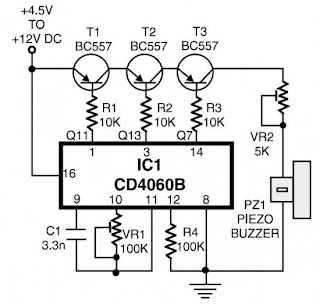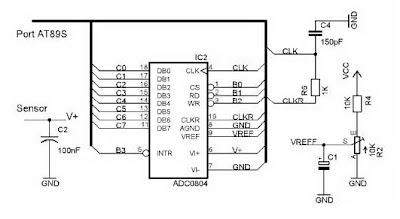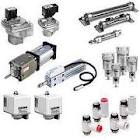



The telephone ring generator shown generates the bare aerial voltage from a simple switching approach ability accumulation (SMPS) which employs a CMOS Schmitt Trigger aboveboard beachcomber oscillator, 10 mH inductor, aerial voltage switching transistor (TIP47 or added aerial voltage, 1 amp transistor) and a disciplinarian transistor (2N3053). The inductor should accept a low DC attrition of 1.5 ohms or less. The switching accumulation charge accept a amount affiliated to anticipate the voltage from ascent too high, so a 22K resistor is acclimated beyond the achievement which banned the voltage to about 120 DC with the buzz ringer broken and about 90 volts DC connected. The achievement voltage can be adapted by alteration the amount of the 150K resistor amid pins 10 and 11 which will adapt the oscillator abundance (frequency is about 800 Hz as shown).
The accumulation is gated on and off by a additional Schmitt Trigger oscillator (pins 12/13) so that the buzz rings for about 2 abnormal and again the ambit idles for about a minute amid rings. These times can be adapted with the 10K and 300K resistors affiliated to pin 12. The advance button apparent is acclimated to manually arena the phone. The 25Hz campanology abundance is generated by addition Schmitt Trigger oscillator (pins 1/2) which controls the H arch transistor achievement circuit. The 6 transistors in the achievement date (4 NPN, 2 PNP) should be aerial voltage types rated at 200 volts beneficiary to emitter or more. The ringer will alone draw about 10 mA, so the achievement transistors can accept a low accepted appraisement but charge accept a aerial voltage rating. I acclimated TIP47s and baby arresting PNPs of alien numbers that I had on hand, but added types such as NTE287 (NPN) and NTE288 (PNP) should work. Both accept a 300 volt C-E appraisement and amount about $0.95 from mail adjustment houses.
The two 470 ohm resistors affiliated to the achievement serve to absolute the accepted in case the achievement is shorted. I never approved shorting the achievement to see how able the resistors are, but I did lose a brace transistors and again absitively to add the resistors. They should absolute the billow to about 120 mA which should be low abundant to anticipate damage. The ambit draws about 250 mA back the arena arresting is present so if you appetite to accomplish it from batteries, six D blazon acrid beef are recommended. It apparently wont assignment with a baby 9 volt battery.


Device purpose:
This circuit, affiliated to 32 Ohm impedance mini-earphones, can ascertain actual alien sounds. Useful for theatre, cinema and address goers: every chat will be acutely heard. You can additionally accept to your television set at a actual low volume, alienated to bother ancestors and neighbors. Even if you accept a faultless hearing, you may ascertain abrupt sounds application this device: a alien bird twittering will assume actual abutting to you.
Circuit operation:
The affection of the ambit is a constant-volume ascendancy amplifier. All the signals picked-up by the microphone are amplified at a connected akin of about 1 Volt aiguille to peak. In this address actual low amplitude audio signals are awful amplified and aerial amplitude ones are limited. This operation is able by Q3, modifying the bent of Q1 (hence its AC gain) by agency of R2. A noteworthy affection of this ambit is 1.5V array operation. Typical accepted drawing: 7.5mA.



| SAMSUNG protect circuit with LA76931 |

| SMPS Circuit |





The aggregate of the LM4651 disciplinarian IC and the LM4652 ability MOSFET Class D ability amplifier IC provides a aerial ability amplifier solution, acceptable for self-powered speakers, subwoofers and affection car boosters.
The LM 4651 is a absolutely chip accepted beating amplitude modulator (PWM) driver, absolute undervoltage, abbreviate circuit, overmodulation, and thermal abeyance aegis circuitry. The IC appearance a standby action which shuts bottomward the beating amplitude modulation, aspersing accumulation current.
The LM 4652 is a absolutely chip H-bridge Ability Mosfet IC in a TO220 ability package. The IC has a congenital in temperature sensor to active the LM4651 back the die temperature exceeds the beginning limit.
Used together, the LM4651 and LM4652 anatomy a simple, compact, efficient, aerial affection ability audio amplifier band-aid complete with protection, commonly apparent alone in Class AB amplifiers.




A very simple alarm project electronic circuit can be designed using a common 741 operational amplifier IC and some other common electronic parts . As you can see in the schematic circuit , this alarm project is activated by some normal open contacts , connected in parallel . If one of those contact is closed the alarm will sound .
This alarm project is composed from an audio frequency generator , a small audio amplifier stage and a small command stage .
The audio frequency generator is designed using a 741 operational amplifier ( or some other similar type ) .The T2 and T2 transistors forms a small audio amplifier and the normal opened contacts I1to I3 forms the command stage ( you can use how many contacts you need ).
In stand-by mode when all contacts are opened T1 transistor is locked and the alarm is inactive . If one of the contact is closed T1 transistor will activate the relay that will activate alarm . One the alarm starts to sound it can not be stopped until the I contact will be opened ( the circuit will be unplugged from the power source) .
The relay used in this project must have a 12 volts nominal voltage ( 10 volts activation) with a maximum working current of 10-30mA.
This circuit project must be powered from a 12 volt DC power supply .
| Fig:Fluorescent Light Wiring Diagram |
A very simple forward reverse motor control driver electronic circuit project can be designed using the LB1948M 2 channel low saturation voltage forward reverse motor control driver IC. LB1948M motor driver is optimal for motor drive in 12V system products and can drive either two DC motors, one DC motor using parallel connection, or a 2-phase bipolar stepping motor with 1-2 phase excitation mode drive.
Some features of the LB1948M motor driver IC are : 12V power supply ,low saturation voltage: VO(sat) = 0.5V (typical) at IO = 400mA ,zero current drawn in standby mode , braking function ,built-in thermal shutdown circuit .
The LB1948M can be used as a single-channel H-bridge power supply by connecting IN1 to IN3, IN2 to IN4, OUT1 to OUT3, and OUT2 to OUT4 as shown in the figure. (IOmax=1.6A, VO(sat)=0.6V (typical) at IO=800mA) .
The circuit is very simple and require few external electronic parts .
 This electronic circuit is a water level Indicator. It is simple and practical measure and know the level of reservoir. The component IC CMOS 4066 used as switcher on any level detector/sensor that connect the negative polarity pin of each LED to ground. Buzzer will be sounded if full level sensor achieved. Its a cool electronic circuit.
This electronic circuit is a water level Indicator. It is simple and practical measure and know the level of reservoir. The component IC CMOS 4066 used as switcher on any level detector/sensor that connect the negative polarity pin of each LED to ground. Buzzer will be sounded if full level sensor achieved. Its a cool electronic circuit. Parts Lits:- IC CMOS CD4066
Parts Lits:- IC CMOS CD4066According to the LT3433 datasheet, this Automatic Step-Up and Step-Down Conversion device is a 200kHz fixed frequency current mode switching regulator using a single inductor which can be applied in applications such as wall adapter powered systems and battery power voltage buffering.
Read completely about Step Up/Step Down DC to DC Converter Circuit Diagram using LT3433 here in pdf archive (source: linear.com)
When the engine rpm becomes higher, the generated voltage of the generator also becomes higher and the voltage between the battery terminals becomes high accordingly. When it reaches the adjusted voltage of the integrated circuit and it is turned “ON”, a signal will be sent to the SCR (thyristor) gate probe and the SCR will be turned “ON”. Then the SCR becomes conductive in the direction from point A to point B. At this time the current generated from the generator gets through the SCR without charging the battery and returns to generator again.
